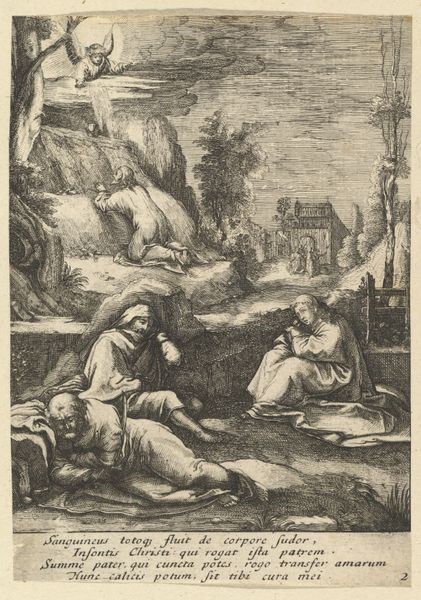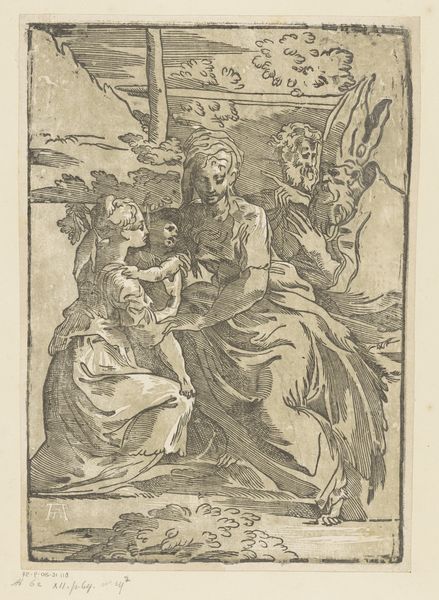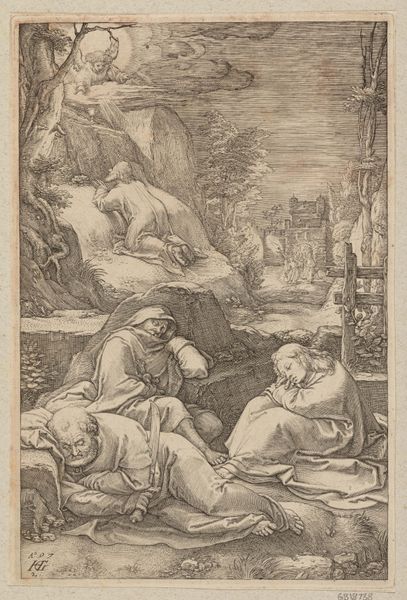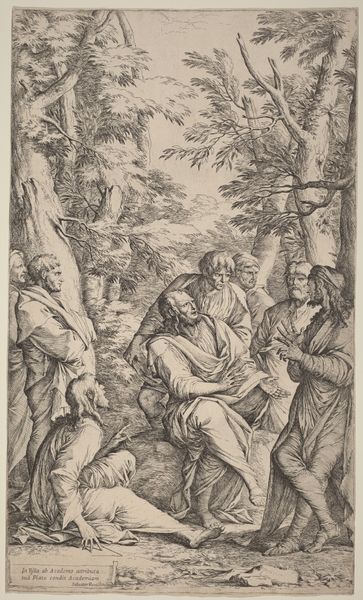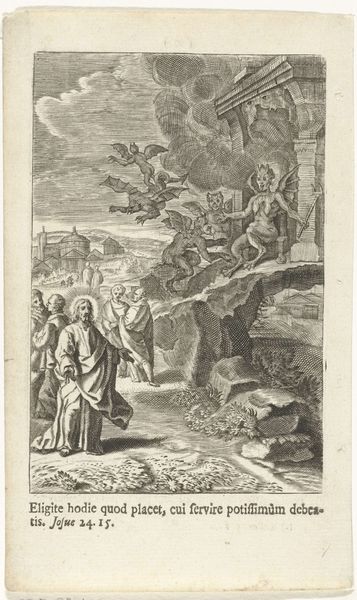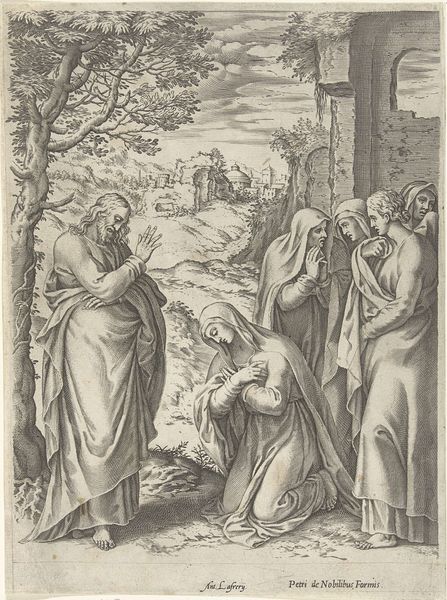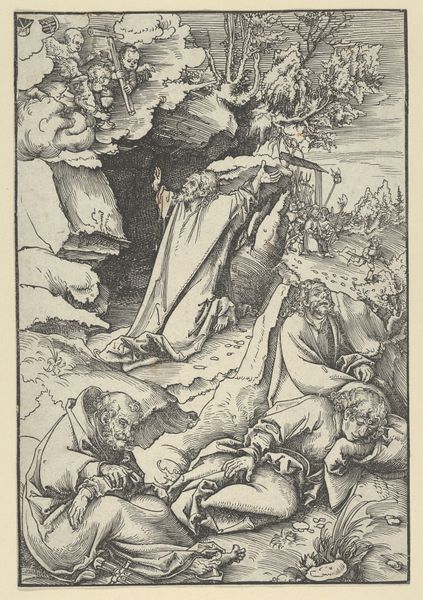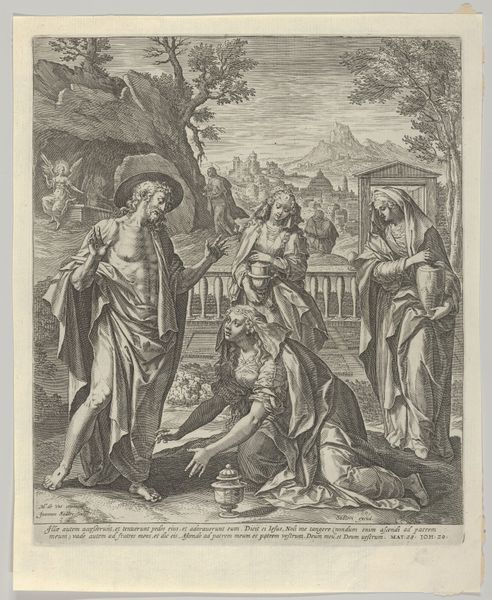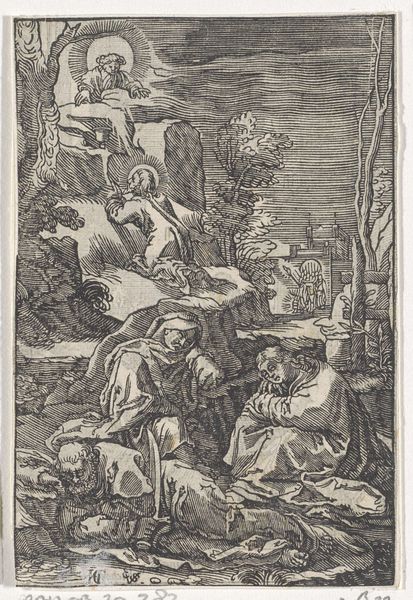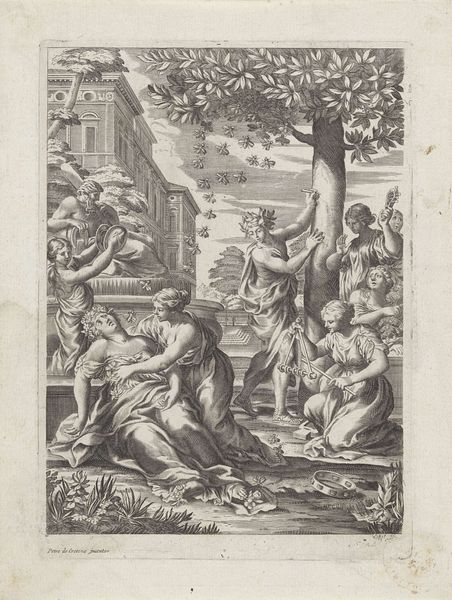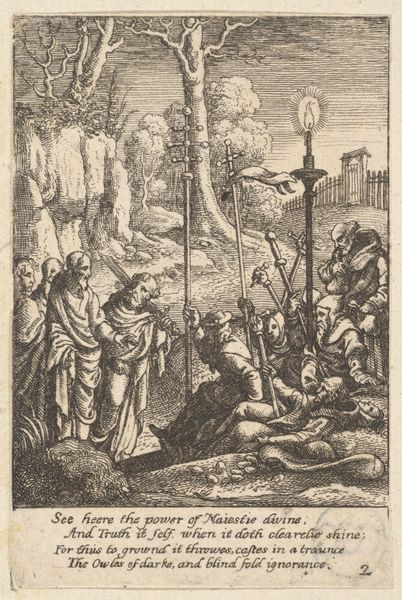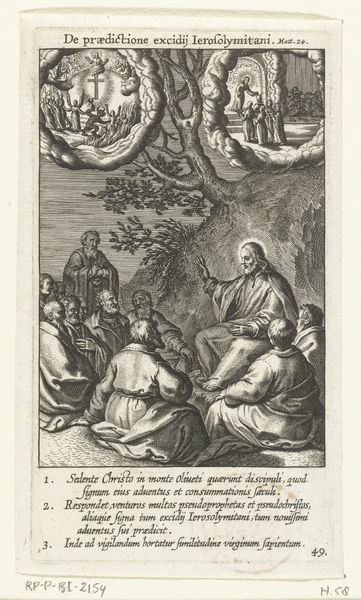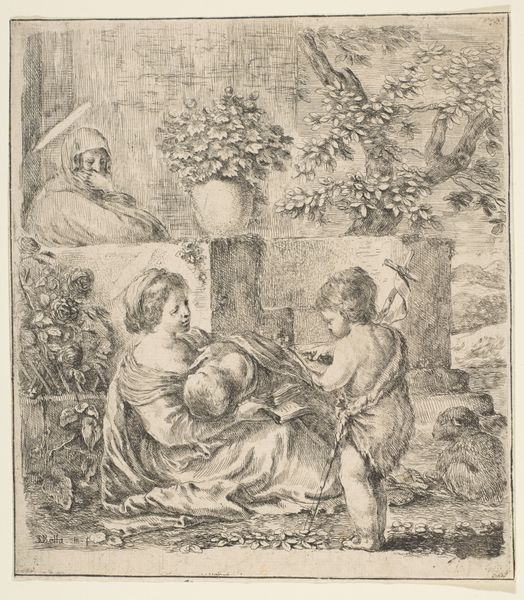
Dimensions: height 294 mm, width 213 mm
Copyright: Rijks Museum: Open Domain
Curator: The somber and dramatic landscape immediately sets a certain tone here. Editor: It certainly does. What we're looking at is a print by Aliprando Caprioli, likely made between 1570 and 1604. The work, done in etching, depicts "The Stigmatization of Saint Francis." Curator: The etching technique really emphasizes line and texture. Look at the way the robes are articulated, almost mass-produced in appearance and yet so refined in the image. The light feels so intentionally captured; those lines radiating towards Francis have real presence. How does that play with the imagery for you? Editor: Those emanating rays are critical. Visually, they echo depictions of divine grace and selection. St. Francis raising his hands in supplication becomes a figure not simply in prayer but in transubstantiation. It evokes the broader history of the saint and imitates conventional devotional images from the period. Notice the care taken to emphasize that the wound symbols on the hands line up exactly with where Christ’s wounds would have been when hung from the cross. Curator: Indeed. Thinking about the means of producing images like this in the late 16th century, an etching like this made religious iconography far more available, in comparison with something like a painted altarpiece which may have been privately commissioned and remain immobile. Editor: This image provides a template for piety. Consider the secondary figure observing the stigmatization: one that stands in for all who were seeing this picture at the time. What are some visual motifs standing out to you in regards to materials used here? Curator: Well, beyond the formal technique, consider the symbolic use of paper here. In terms of value, as well as its sheer affordability, to its consumption within the economy; those aspects influence this work significantly. It’s not just devotional; it’s almost a miniature industry that helps facilitate religious narratives on a mass scale. Editor: Yes, it's true. In its creation and distribution, the work created a conduit for both personal reflection and collective identity, making both this imagery more available and creating, really, a kind of standardization of those images. Curator: A fascinating collision of labor, belief, and dissemination. It allows a different angle for seeing works of faith. Editor: Indeed; seeing faith visualized and reproduced makes its story available in more and new ways.
Comments
No comments
Be the first to comment and join the conversation on the ultimate creative platform.
